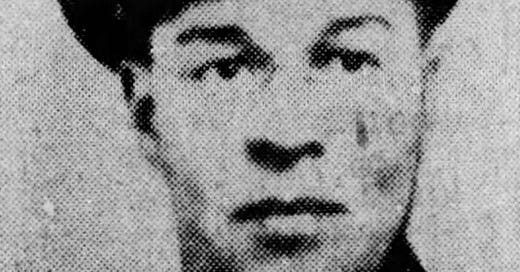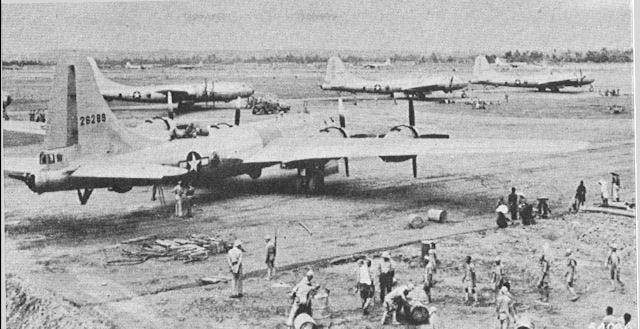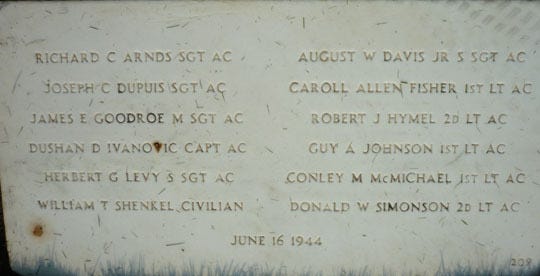Bill Shenkel's B-29 shot down over Japan
Nobody just "knew" Bill Shenkel. They were either a "good friend" of Bill's or they had never met him. Bill was -- or is -- a newspaperman's newspaperman. He's been missing, if you recall, since the B-29 raid on Japan -- the first one.
That was the start of a column by Kenneth Nichols in the July 12, 1944 edition of the Akron Beacon Journal. By then, it had been early a month since Newsweek correspondent William T. Shenkel failed to return from a bombing raid over Japan.
As Nichols mentioned, the mission was indeed noteworthy -- the first attack by U.S. bombers on the home islands since the Doolittle raid more than two years earlier. Eleven correspondents went along -- eight writers, three photographers -- but only 10 came back.
Shenkel, 38, was born in Akron but grew up in Iowa. He returned to Northeast Ohio to follow his passion, first joining the Cleveland News, then the Cleveland Press and finally the Akron Times-Press, where he worked for about eight years. In his final newspaper stop, he covered cops, aviation, and the labor movement -- the latter serving as his springboard to Newsweek in 1938. He moved to the D.C. area with his wife Winifred, a former reporter herself, and the couple settled in Silver Spring, Maryland, to raise their two sons.
Shenkel covered an important beat for Newsweek as war production ramped up and became in many ways the dominant storyline on the home front. But he yearned to be closer to the action. He asked the magazine for an in-theater assignment and in early 1944 was tasked with leading Newsweek's New Delhi bureau.
Rather than heading straight to India, Shenkel traveled first to Italy, where he covered the battle for Santa Maria Infante in mid-May. From there it was on to the China-Burma-India theater, where he met up with the XX Bomber Command.
The B-29s earmarked for the attack on Japan had been based at Kharagpur, near Calcutta, before moving to airbases in China in the days before the raid. Shenkel hooked on with a 10-man crew led by Capt. Dushan D. Ivanovic of the 792nd Bomb Squadron, 468th Bomb Group at Pengshan.
Their Superfortress was among 75 that lifted off from multiple airfields the night of June 15 and headed east. The primary target was the Imperial Iron and Steel Works in Yawata, just outside Kyoto, which the bombers reached shortly after 12:30 a.m. on the 16th.
Sgt. Lou Stoumen of Yank magazine was aboard another B-29 that night. He described the scene in a story that led the July 21 issue:
The target was just ahead. There was no fiery glow through the clouds to show it had already been hit. We had been the fourth plane to take off from the field and were evidently one of the first over the target.
Flak! The gunners said the sky was full of exploding ack-ack shells, some close, most of them beneath us. Intelligence reports confirmed this later, calling the ack-ack "moderate to intense." But I saw no flak.
Later we learned that searchlights caught one of the last planes over the target, the one on which Bill Shenkel, Newsweek's correspondent, was a passenger, and held it in a firm bracket of light until gunners shot it down with all four motors streaming fire.
The editors at Newsweek had no idea Shenkel was on the bombing mission that night, and would not know until a War Department representative contacted Washington bureau chief Ernest Lindley on June 21 to report that the correspondent was missing.
As with any such case, those who knew him back home held out hope for a happy ending. A June 22 editorial in the Akron Beacon Journal put it this way:
Akronites who knew Bill Shenkel as a newspaperman here aren't asking why he went along on the first B-29 raid on Japan. They know. He was a top-flight reporter -- one of the kind who has to go where there's action.
Bill went on his own, without orders from Newsweek magazine, of which he was associate editor, to get the story firsthand. He was on one of the four bombers that failed to return from the mission.
It's probably the first time Bill ever failed to come back with the story. And there is still a chance that he has escaped death and will be back with a greater story.
Speaking at a press conference the following day, Secretary of War Henry Stimson echoed those thoughts, saying "we hope he may still be found."
Those hopes were short-lived. On June 25, a Berlin radio broadcast of a dispatch from Tokyo reported a Newsweek correspondent named "Shenko" and the crew of the B-29 in which he was riding had been killed after being shot down over Japan.
It would take another year and a half before what passed for official word to arrive. On October 27, 1945, the Associated Press reported that Tokyo-based Newsweek correspondent Harold R. Isaacs had been told an investigation had established "virtual confirmation" of Shenkel's death.
The correspondent's remains, and those of the B-29's crew, were returned from overseas in 1949 and buried together at the Jefferson Barracks National Cemetery in St. Louis on August 8, 1949.






